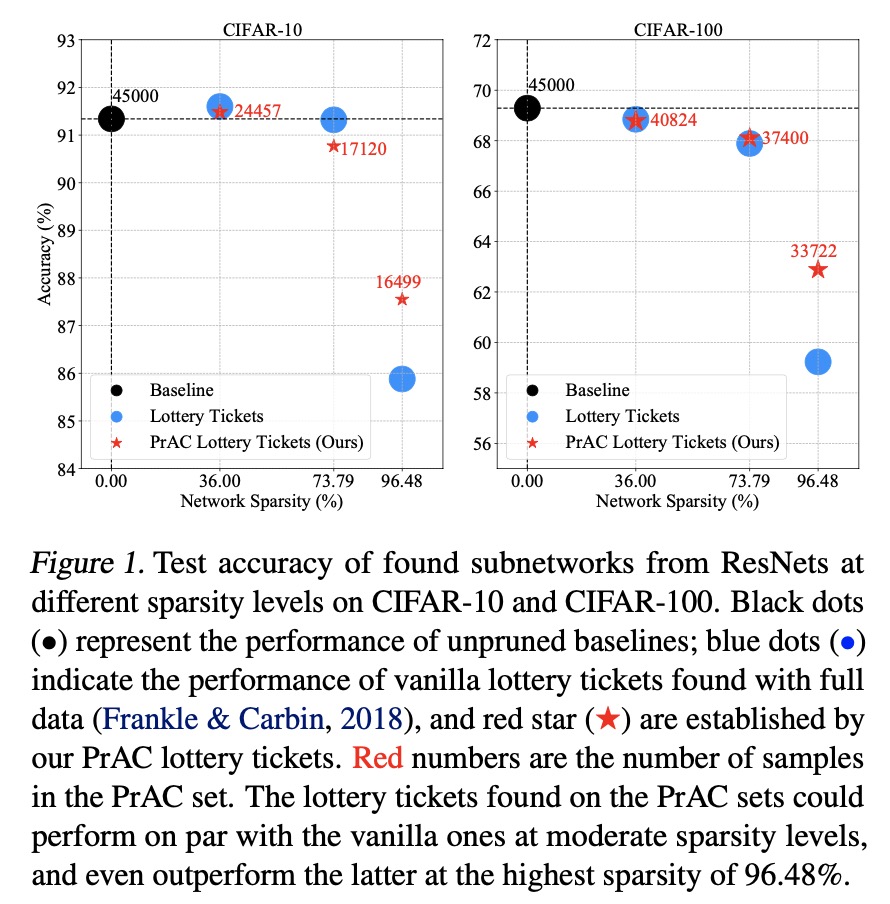Efficient Lottery Ticket Finding: Less Data is More
The lottery ticket hypothesis (LTH) reveals the existence of winning tickets (sparse but critical subnetworks) for dense networks, that can be trained in isolation from random initialization to match the latter's accuracies. However, finding winning tickets requires burdensome computations in the train-prune-retrain process, especially on large-scale datasets (e.g., ImageNet), restricting their practical benefits. This paper explores a new perspective on finding lottery tickets more efficiently, by doing so only with a specially selected subset of data, called Pruning-Aware Critical set (PrAC set), rather than using the full training set. The concept of PrAC set was inspired by the recent observation, that deep networks have samples that are either hard to memorize during training, or easy to forget during pruning. A PrAC set is thus hypothesized to capture those most challenging and informative examples for the dense model. We observe that a high-quality winning ticket can be found with training and pruning the dense network on the very compact PrAC set, which can substantially save training iterations for the ticket finding process. Extensive experiments validate our proposal across diverse datasets and network architectures. Specifically, on CIFAR-10, CIFAR-100, and Tiny ImageNet, we locate effective PrAC sets at 35.32%~78.19% of their training set sizes. On top of them, we can obtain the same competitive winning tickets for the corresponding dense networks, yet saving up to 82.85%~92.77%, 63.54%~74.92%, and 76.14%~86.56% training iterations, respectively. Crucially, we show that a PrAC set found is reusable across different network architectures, which can amortize the extra cost of finding PrAC sets, yielding a practical regime for efficient lottery ticket finding.
PDF Abstract

 CIFAR-10
CIFAR-10
 CIFAR-100
CIFAR-100